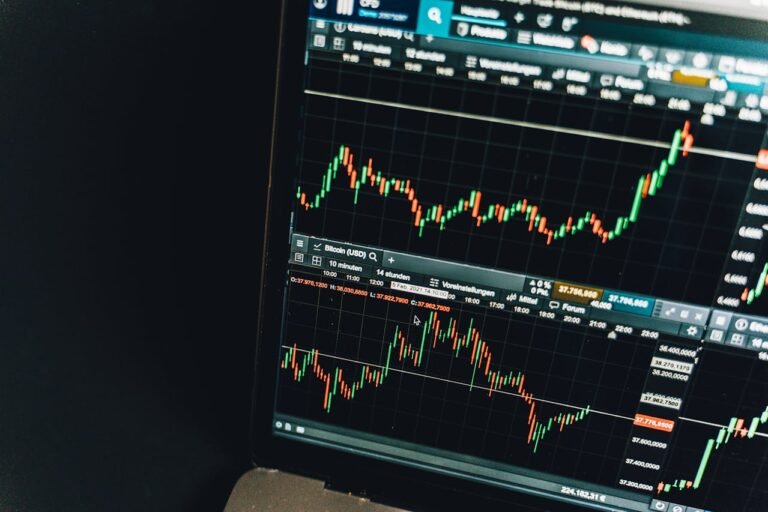The world of cryptocurrency is known for its volatility, and XRP is no exception. As one of the major players in the crypto market, XRP’s price movements can have far-reaching effects on various sectors, including online retail shopping. Understanding how these fluctuations impact consumer behavior and purchasing decisions can provide valuable insights for retailers and shoppers alike.
Understanding XRP and Its Market Dynamics
XRP, often referred to simply as Ripple, is a digital currency used for cross-border payments and financial transactions. The XRP price is influenced by various factors, including market demand, regulatory news, technological developments, and overall sentiment in the cryptocurrency market. Like other cryptocurrencies, XRP experiences significant price swings, which can lead to rapid changes in its value.
The Connection Between XRP Price and Consumer Spending
When the price of XRP rises, holders of the cryptocurrency often feel a sense of increased wealth. This “wealth effect” can lead to more spending, as individuals feel more financially secure and willing to make purchases. Conversely, when the price drops, the opposite can occur, with consumers becoming more cautious and reducing their spending.
1. Increased Spending During Bull Markets
During periods of price increases, also known as bull markets, XRP holders might be more inclined to spend their cryptocurrency on online retail platforms. This increased spending can be attributed to a few key reasons:
- Perceived Increase in Wealth: When the value of their XRP holdings rises, consumers feel richer and more confident in their financial status.
- Fear of Missing Out (FOMO): The excitement of a rising market can lead to impulsive buying decisions, as consumers rush to purchase items before prices go higher.
- Easier Conversion to Fiat: Higher prices can make it more favorable for consumers to convert XRP to fiat currency, which can then be used for online shopping.
2. Decreased Spending During Bear Markets
On the flip side, during bear markets, where the price of XRP declines, spending behavior tends to shift in the opposite direction:
- Reduced Wealth Perception: A drop in XRP price can make holders feel poorer, leading to more conservative spending habits.
- Increased Savings: Uncertainty in the market can encourage consumers to save their XRP rather than spend it, hoping for future price recovery.
- Psychological Impact: The negative sentiment surrounding a declining market can dampen consumer confidence, reducing the likelihood of discretionary spending.
The Impact on Online Retailers
Online retailers accepting XRP as a form of payment must be aware of these market dynamics to better anticipate and respond to changes in consumer behavior. Here are a few strategies they can employ:
1. Dynamic Pricing Models
Retailers can implement dynamic pricing models that adjust prices based on the current XRP price. This approach can help maintain stable revenue streams despite market volatility. For example, during a bull market, retailers might offer discounts or promotions to encourage spending, while in a bear market, they could focus on value-based marketing to attract more cautious shoppers.
2. Marketing Campaigns Aligned with Market Trends
By monitoring XRP price trends, retailers can tailor their marketing campaigns to align with consumer sentiment. During bull markets, campaigns can highlight luxury and high-end products, appealing to the increased purchasing power of XRP holders. Conversely, during bear markets, marketing efforts can focus on practical and essential items that consumers are more likely to buy.
3. Payment Flexibility
Offering flexibility in payment options can also mitigate the impact of XRP price fluctuations. Retailers can allow consumers to pay with a mix of XRP and fiat currency, providing a buffer against volatility. Additionally, providing instant conversion of XRP to fiat at the time of purchase can help stabilize the transaction value for both the retailer and the consumer.
Consumer Behavior and XRP Price Fluctuations
To delve deeper into how XRP price fluctuations impact consumer behavior, it’s essential to consider various psychological and economic factors:
1. Spending Patterns
Consumers’ spending patterns are heavily influenced by their perception of value and future expectations. When the XRP price is high, consumers may feel more comfortable making larger purchases or indulging in non-essential items. Conversely, a lower XRP price may lead to more prudent spending, with consumers focusing on necessities and delaying discretionary purchases.
2. Investment vs. Spending
For many XRP holders, the cryptocurrency serves as both an investment and a means of transaction. The decision to spend or hold XRP often hinges on market conditions. During a bull market, the potential for further gains might outweigh the desire to spend, leading to reduced transaction volumes. In contrast, during a bear market, the fear of further losses can prompt holders to liquidate their XRP and spend the proceeds.
3. Retailer Loyalty
Retailers that consistently offer value and adapt to market conditions can build strong loyalty among XRP users. Providing rewards or incentives for using XRP, regardless of market conditions, can encourage repeat business and foster a loyal customer base.
The Future of XRP in Online Retail
As the adoption of cryptocurrency in online retail continues to grow, the relationship between XRP price fluctuations and consumer behavior will become increasingly significant. Retailers must stay informed about market trends and be prepared to adjust their strategies accordingly. Here are some potential developments to watch for:
1. Increased Integration of Crypto Payment Gateways
More online retailers are likely to integrate crypto payment gateways that support XRP and other cryptocurrencies. These gateways can offer features such as instant conversion to fiat, reducing the impact of price volatility on transactions.
2. Enhanced Consumer Education
Educating consumers about the benefits and risks of using XRP for online purchases can help build trust and confidence. Retailers can provide resources and support to help consumers navigate the complexities of cryptocurrency transactions.
3. Regulatory Developments
Regulatory changes can significantly impact the XRP market and, by extension, online retail. Keeping abreast of regulatory developments and adapting to new compliance requirements will be crucial for retailers accepting XRP.
Conclusion
The fluctuations in XRP price have a profound impact on online retail shopping, influencing both consumer behavior and retailer strategies. By understanding the dynamics of the XRP market and implementing adaptive measures, retailers can capitalize on the opportunities presented by cryptocurrency while mitigating potential risks. As the landscape of digital payments evolves, staying ahead of market trends and maintaining a flexible approach will be key to success in the ever-changing world of online retail.
Brit is a passionate writer with a love for storytelling and exploring the depth of human experience through words. With a keen eye for detail and a thoughtful voice, Brit crafts pieces that resonate with readers and spark meaningful reflection. When not writing, Brit enjoys quiet moments with a good book, long walks, and finding inspiration in everyday life.






